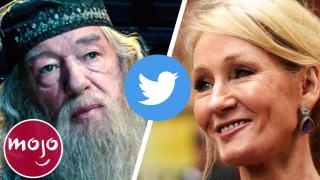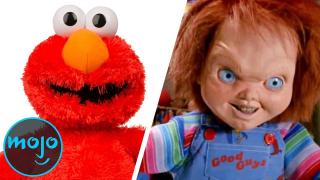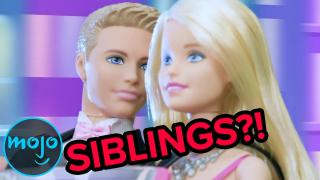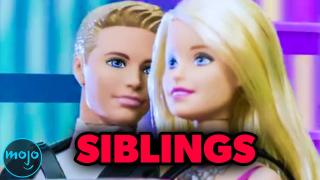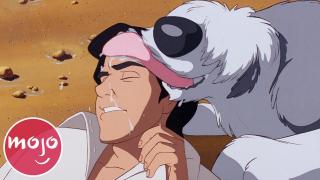Top 10 Dark Stories Behind Children's Books
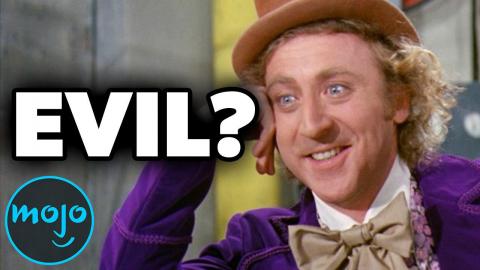
#10: The “Harry Potter” Series J.K. Rowling
Top 10 Funniest Harry Potter Memes
It’s a series of fantasy novels that changed the landscape of books and filmmaking for all time. Chronicling the lives and adventures of the titular young wizard and his friends at Hogwarts, this best-selling book series became the basis for eight crowd-pleasing films that broke records around the world. However, it may come as a surprise to many fans that some of the elements in Rowlings’ books were taken from her own real-life pains and struggles. For instance, the very premise of Potter being an orphaned wizard was taken from the agony Rowling experienced from losing her mother to multiple sclerosis.
#9: “Peter Pan” J. M. Barrie
Peter Horan: Interview with the Former About.com CEO & Topix Board Member
On the one hand, it’s the story of the leader of the Lost Boys, an independent, mischievous young lad who never grows up. However, for being a story filled with fun and wonder that inspired a series of popular films, plays and TV shows, its origins are significantly lacking in such happy details. While also inspired by Barrie’s friendship with the five boys of the Llewelyn Davies family, when author Barrie’s brother David died at the age of 12, the Scottish author impersonated his dead sibling in order to get his depressed mother’s attention, but to no avail; Barrie quickly grew up while his brother David was forever to stay the same age in her mind. Sound familiar?
#8: “The Wind in the Willows” Kenneth Grahame
Another 10 Dark Stories Behind Children's Toys
Published in 1908, the novel follows the adventures of a mole, a rat, a toad, and a badger as they interact with each other and embark on several adventures. Fans of the novel may know that the premise behind the tales originated with bedtime stories that Grahame would come up with for his son Alastair. Fewer may know the real-life story’s tragic ending: that Alastair would commit suicide at the age of 19 by lying on a set of railroad tracks. Brokenhearted, the Scottish author would never again write something that equalled the success of the children’s classic.
#7: “The BFG” Roald Dahl
10 Dark Stories Behind Children's Toys
Adapted from his 1975 short story, the acclaimed British author’s children’s novel features the adventures of a young girl named Sophie and her interactions with a “big friendly giant” called BFG. Probably the most beloved feature of the book is the BFG’s nonsensical language that provides amusing twists to typical English words. The inspiration for the language is a little less amusing, however, as it came from Dahl’s observations of his wife Patricia, who suffered a stroke that damaged her brain and caused her to forget words and invent new ones. To boot, the children’s book was dedicated to his daughter Olivia, who died at the age of 7 from measles.
#6: “The Butter Battle Book” Dr. Seuss
20 DARK Stories Behind Children's Toys
From the same rhyming genius that wrote “The Cat in the Hat” and “Green Eggs and Ham” came this 1984 book, although the story’s background is much less entertaining than that of the other two. Written during the Cold War, it is the story of an escalating conflict between the Yooks and the Zooks, who disagree on how to eat bread, whether with the buttered side up or down. Seuss wrote the sobering story as a parable about the dangers of war, the destructive nature of nuclear weapons, and humankind’s eventual demise if peace can’t be achieved. Pretty heavy for a book containing the words “tough-tufted Prickly Snick-Berry Switch.”
#5: “Yertle the Turtle” Dr. Seuss
Another from the doctor. Part of a collection of three short stories published in 1958, it has gone on to be recognized as one of the best-selling children’s books of all time. The story features a turtle who is king of the pond, but when he becomes discontent with the stone that serves as his throne, he decides to sit upon an ever-growing stack of unhappy, uncomfortable turtles. When his ambition causes him to demand that he rise above the moon, the bottom turtle burps, upsetting Yertle’s balance and sending him plummeting back into the pond. After publication, the devoutly anti-fascist Seuss was very clear that Yertle represented Adolf Hitler and his tyrannical quest to subjugate other lands and peoples.
#4: “White Fang” Jack London
Top 5 Best White Noise Sleep Sound Machines
Adapted multiple times for television and film, this is the classic novel that introduced the world to one particularly loveable wolfdog. Published to immediate international acclaim, and eventually translated into over 80 languages, readers follow the wild White Fang as he gradually becomes domesticated, against the backdrop of the Klondike Gold Rush. Although a compelling adventure, aspects of the story cannot escape the racial prejudices of its famously complicated author, with lines like: “As compared with the Indians he had known, they were to him another race of beings, a race of superior gods." London even once elaborated on his supremacist views explicitly in an essay entitled “The Salt of the Earth.”
#3: “Charlie and the Chocolate Factory” Roald Dahl
Back to the Dahl-house. Which child didn’t dream of accompanying young Charlie Bucket as he toured Willy Wonka’s eccentric chocolate factory? The imaginative novel has been widely praised as one of the greatest young-adult books of all time. However, allegations of racism have followed the book for a long time. The original print edition featured the Oompa Loompas as having African descent, which prompted the NAACP to raise concerns over depictions of slavery. Dahl’s widow Felicity later claimed he was not racist, since his original vision for protagonist Charlie was to be a black child, and it was his agent that nixed the idea because he felt it wouldn’t appeal to readers.
#2: “Dumbo, the Flying Elephant” Helen Aberson-Mayer
What could be dark about the heartwarming tale of a little elephant with oversized ears who becomes the star of the circus? Apparently, quite a bit. According to Mayer’s son Andrew, the trials and bullying that Dumbo experiences in the story represented the struggles of his mother, who similarly had a difficult life. Others believe the story of Dumbo was based on the real-life circus elephant Jumbo, who rose to fame in the late 1800s. Rather than being a happy, carefree elephant, Jumbo suffered severe mistreatment, as he watched his mother be killed, and then spent a life in captivity where he was fed coins, doped with alcohol, and eventually died after getting hit by a train.
#1: “Love You Forever” Robert Munsch
Top 10 Ways Your Pets Show You They Love You
This tearjerker is widely acclaimed and is one of the bestselling children's books of all time. The premise is simple: it is the story of the love that a mother has for her baby boy, as shown over time. Throughout his life, through thick and thin, she inevitably visits her son, cradles him in her arms, and sings a lullaby promising to love him forever. However, the inspiration for the story came from a devastatingly emotional place for the author: it was a poem that he would sing silently to himself after the deaths of his first two children, who were both stillborn.


